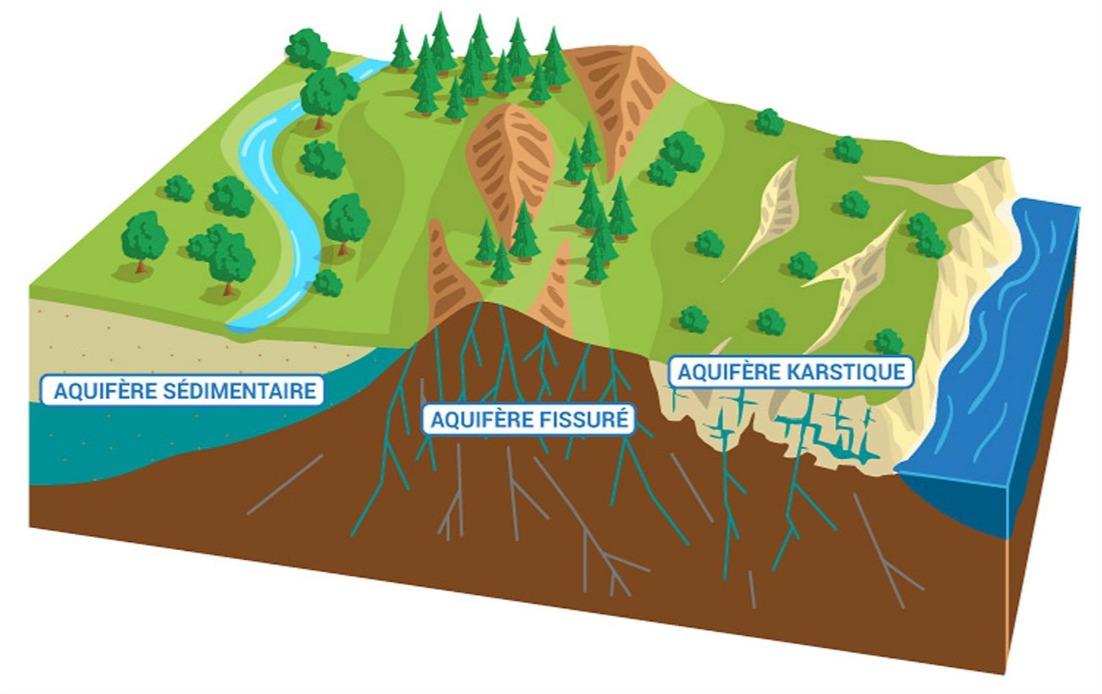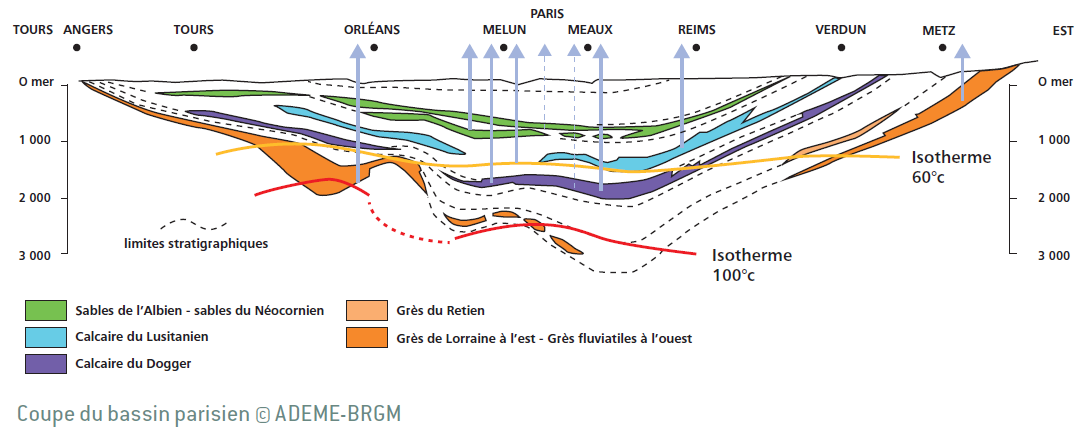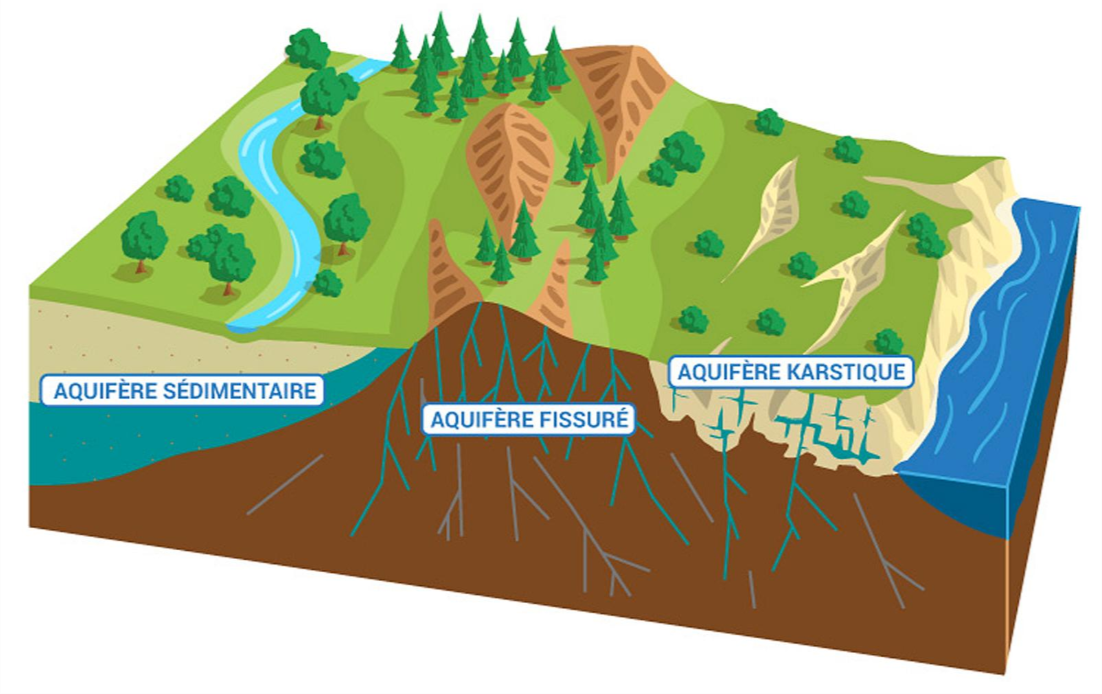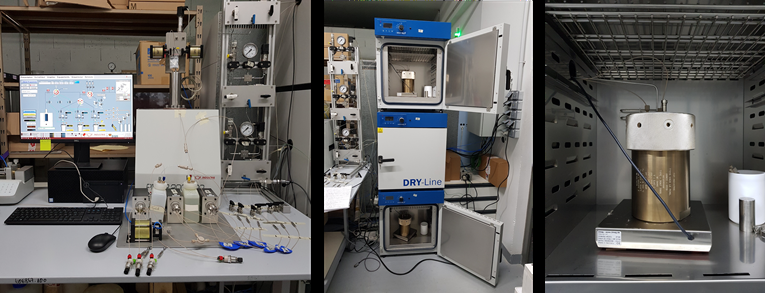Inter-seasonal heat storage: a solution studied at the Paris-Saclay site to adapt the tempered loop to the specificities of 5GDHC over the long term
D2Grids Project

Heat storage to balance production and demand is one of the basic principles in the definition of 5th generation heating and cooling grids (or 5GDHC). It can be carried out on different time scales (short term and long term) and be of different types (storage in surface reservoirs, geological storage in aquifers, mines, probe fields...).It is nevertheless essential to study the effects of reinjecting water at a warmer or colder temperature into the basement during this storage. This can indeed disturb the chemical balance of the groundwater and have an impact on the characteristics of the sedimentary rocks containing the groundwater table.
Inter-seasonal geological heat storage in aquifers
Through the D2Grids project and to meet the specificities of the 5GDHC technology, it is planned to study the pre-feasibility of reversing the flow of the Albian geothermal doublets of the Paris-Saclay pilot for inter-seasonal storage.

Section of the Paris Basin and main deep aquifers (©BRGM)
The principle of inter-seasonal storage is based on :
- cold storage in winter when the demand for heat is higher. To do this, water from the Albian aquifer is pumped to the "hot" well initially at the temperature of the aquifer (30°C). Once the calories have been recovered at the surface exchanger, this water is then reinjected into the Albian aquifer at a much lower temperature (potentially between 5 and 10°C), in the second well of the doublet ("cold" well);
- storage of hot water in summer when the demand for cold is higher. The direction of circulation of the doublet is then reversed. The water is pumped into the "cold" well and reinjected into the "hot" well once it has been reheated to the aquifer's initial temperature (30°C) or potentially higher.
In order to study the technical and environmental feasibility of geological storage at the pilot site, BRGM is offering its expertise in the framework of the INTERREG D2Grids project to carry out additional studies such as :
- the study of the hydro-thermal impacts of heat and/or cold storage in the Albian region for different storage temperatures and potential recovery rates of the stored heat;
- the geochemical and microbiological characterization of the aquifer during heat and/or cold storage with the performance of laboratory percolation tests.
High pressure laboratory tests
An aquifer is composed of a set of porous rocks that are more or less saturated with water. The latter is in chemical equilibrium with the mineral phase of the aquifer, an equilibrium that depends on a very large number of environmental conditions such as temperature, pressure, the nature of the rocks, the initial composition of the water, etc.

Diagram of different aquifer systems (©AFB)
The operation of an aquifer associated with inter-seasonal storage changes some of these conditions, which can lead to a series of dissolution and precipitation reactions that are potentially damaging to the environment and the process. The system is too complex to anticipate and quantify the effect of these changes in situ. For this reason, it is necessary to reproduce the process in the laboratory in order to study precisely the physico-chemical phenomena involved. As the targeted aquifer is located at a depth of more than 600 m, it is necessary to use specific experimental devices that can withstand the pressure, such as those of BRGM's BioREP platform, dedicated to the study of deep geological systems. These devices are suitable for carrying out percolation tests at different temperatures and over several weeks.

Photos of one of the devices of BRGM's BioREP high-pressure platform (©BRGM).
Aquifer microbiology
Underground environments, even deep ones, can have significant microbial diversity. The difficulty in studying these environments is that these microorganisms are generally present in small quantities because of the limited resources for their development. Nevertheless, the exploitation of an aquifer during the storage process leads to a disturbance of the environment (dissolution of rocks, change in temperature, oxygen supply and change in REDOX...) which is likely to provide energy sources and create conditions conducive to the activation of certain microorganisms. BRGM has recognized expertise in environmental microbial ecology and will carry out a preliminary study to investigate the impact of inter-seasonal heat storage on the bacterial microflora of the Albian aquifer, a strategic aquifer for drinking water supply in the Ile-de-France region.
Learn more about the D2Grids project




